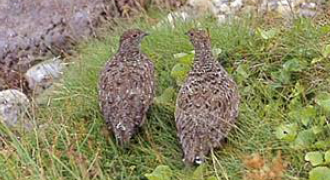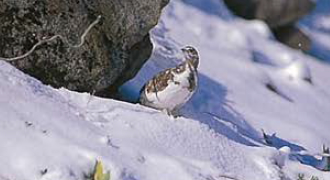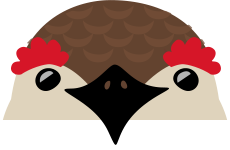
Hatchling to juvenile
About 21 or 22 days after incubation begins, the eggs hatch and the chicks are born. Baby rock ptarmigans are already covered in feathers when they hatch with their eyes open. After waiting under their mother's belly for their feathers to dry, they can walk right away. It is finally time to leave the nest.
Chicks first walk aimlessly and clumsily, wandering around the area near the nest. However, when they hear their mother's cooing, they are lured out of the nest, following her. After a short time, they begin to peck at vegetation. After about 5 minutes of walking around, young chicks will rush in a group back under their mother's belly, because they are not yet able to regulate their own body temperature. Once they have warmed up, they eagerly leave their mother in search of food. The family continues moving while repeating this cycle of feeding and huddling together for warmth, and does not return to the nest.
In the Murododaira area, leaving the nest occurs between July 5th and 10th during an average year. Males, on the other hand, begin to ease up on guarding their territory about one week before the eggs hatch. They rarely stand lookout, and are occasionally seen to pass time with other males looking for food. Thus, the territories established during mating season begin to break up.
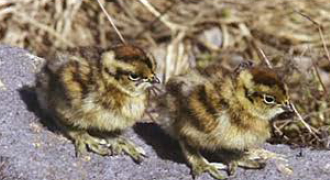
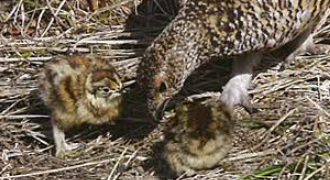

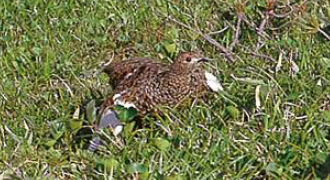
About one week after hatching, chicks gain their flight feathers and become able to fly two or three meters. The baby down which covered their entire body also thins out, giving way to the feathers and tail of a juvenile. Within about four weeks, the chicks’ appearance has changed to that of juvenile rock ptarmigans.
Family groups are often seen in relatively flat areas while the chicks are young, but as they grow they venture more into steep valleys. In these areas where snow remains longer, there is an abundance of buds and leaves which are easy for young birds to eat. There are many plants with tall stalks in this area as well, making it easier for the juveniles to hide.
As the juveniles grow stronger, they no longer need to huddle with their mother, and become bolder. However, the number of juveniles decreases with time, as some die from the cold or are injured or killed by predators.
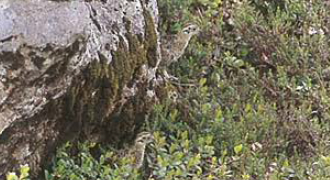
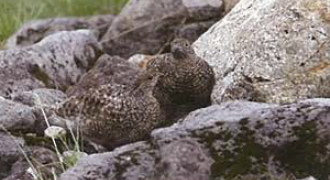
In October, the juveniles have grown to the same size as their parents, and it becomes possible to differentiate males and females. However, their occasional cheeps are still that of chicks, and their face is not yet fully mature. Young birds separate from their parents without any goodbye, and go on to face their first winter on their own. At this point, they have no way of knowing that the harsh winter will last for over four months.
